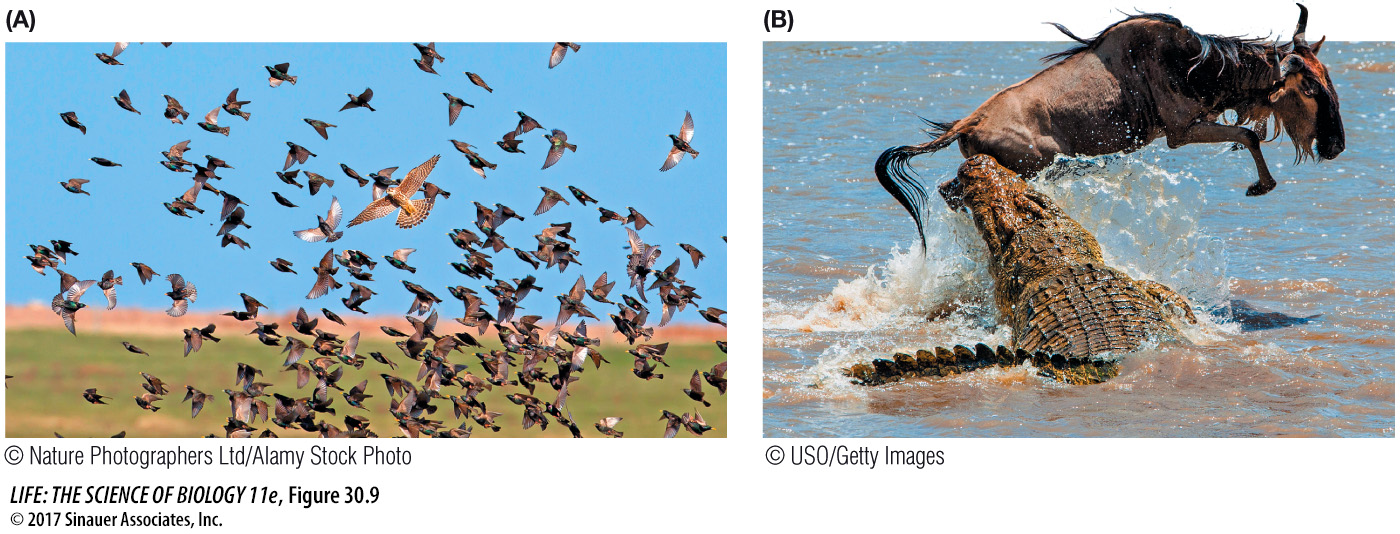Printed Page 644(cont.)
Predators and omnivores capture and subdue prey
Predators possess features that enable them to capture and subdue other animals (referred to as their prey). Many vertebrate predators have sensitive sensory organs that enable them to locate prey, as well as sharp teeth or claws that allow them to capture and subdue prey (Figure 30.9). Predators may stalk and pursue their prey or wait (often camouflaged) for their prey to come to them.

Figure 30.9 Active and Sit-and-Wait Predators (A) The appendages (legs and wings) of the merlin along with its strong beak, are adaptations to the life of an active predatory hunter. (B) The crocodile typically sit motionless in the water, waiting in one spot for unsuspecting prey to walk within striking range.
Omnivores (“all-